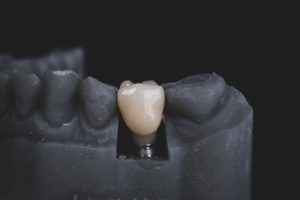
Parts of a Tooth
Teeth have multiple layers. The top layer, which most people are familiar with, is called enamel. It’s a hard outer layer that protects the inside of the tooth and is made up of rock-like minerals.
Under the enamel is dentin, another hard tissue. Dentin has many tiny tubes you can’t see, and if your enamel is damaged and food or liquid can get to the dentin, it can get in those tubes. That can lead to pain or discomfort.
Beneath those harder layers is a section called pulp. It’s made up of soft tissue that holds nerves and blood vessels.
Below all this are layers of cementum and periodontal ligaments. These are what hold your teeth to the jaw.
Damage to any of these layers can cause trouble with the health of the tooth and lead to pain or other symptoms.
Types of Teeth
All teeth are made up of the above layers, but you have different types of teeth in your mouth for tearing, chewing and other purposes.
Adults who still have all their teeth typically have 32. Those include:
- 8 incisors, which are the front four teeth on the top and bottom. These teeth are used for biting into and tearing food.
- 4 canines, which surround the incisors on either side on the top and bottom. These are also used for biting and tearing.
- 8 premolars, two of each on either side of the canines on the top and bottom. They act as guides to move food from the front to the molars in the back when you chew.
- 8 molars, two of each on either side of the premolars on the top and bottom. These flat teeth help grind and chew food to help with swallowing.
- 4 wisdom teeth, which are often removed in the late teen years because they can create crowding and cause spacing issues with other teeth.
Each tooth has a special job to do to support oral health and functions like chewing. Keeping all your teeth as healthy as possible is important — even if you don’t know the names for each type.
Learn More About Dental Care Options
Scheduling an appointment with a dentist in Dallas can help ensure your teeth — from incisors to molars — are in good health. Contact us today to schedule a consultation.
Content found on this blog is intended for educational purposes only and should not be used as a substitute for professional judgement, advice, diagnosis, or treatment. Please speak with a professional if you have concerns about your oral health.